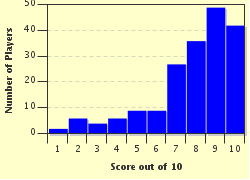Quiz Answer Key and Fun Facts
1. Let's start our tour in Ireland's third largest city - the principal town of Ireland's 'Rebel County'. Two of its Lord Mayors died violently in 1920 during the War of Independence, and the city itself was burnt down by British soldiers in the same year too. Which south coast city is this, on the banks of the River Lee?
2. Oh, I need a drink after that. Thirteen miles from Cork along the N25 road lies the town of Midleton, which contains Ireland's largest distillery - responsible for producing whiskeys such as Jameson, Powers and Paddy. Like Cork though, the area is also famous for one of its mayors, who lost his head in London. Who was this Elizabethan statesman, most famously associated with a story about his cloak, and with introducing the first potatoes to England and Ireland?
3. Sixty miles east of Midleton, we've reached a town famous across the world for its fine crystal glass. What town is this, which each year provides the glass bowl for the shamrock presented to the President of the USA?
4. We're on the road towards Dublin. But first let's stop off in the historic town of Kilkenny for a drink. We could call round to Ireland's oldest brewery, on the go since 1710, for a pint of Smithwick's. But what about we go instead to the landmark dairy company that supplies the cream for the world's best-selling liqueur? They're bound to have a bottle of the stuff about the place ... but what is it called?
5. Into Dublin now. Phoenix Park, in the northwest of the city, is one of the largest walled parks in Europe, and at 1,750 acres is more than twice the size of New York's Central Park. Áras an Uachtaráin is the name of a house in the Park - who lives there?
6. Phew! That was a long walk in the park (even though we stayed on the bus, if you see what I mean). Time for that drink! Guinness, of course, is Ireland's most famous stout beer, brewed right here in Dublin, but there are other Irish stouts too. Which of these isn't a brand name of an Irish stout?
7. Heading out of Dublin on the M3 motorway to Navan in County Meath, we pass by a site of huge archeological significance in the pre-Celtic and Celtic mythology of Ireland. What's the name of this hill on which it's said that the High Kings of Ireland were crowned until the 12th century?
8. It's not far to the beautiful Cooley Peninsula near Dundalk, where we can all have a glass (or two) of an unusual peated malt whiskey, at the Cooley Distillery. The area is famous for being the scene of the legendary epic: 'The Cattle Raid of Cooley', which tells the story of how the entire army of Meadhbh, queen of Connacht, was opposed single-handedly by a warrior hero of Ulster. Who was he?
9. We need something to eat now after all that whiskey. Let's get up the road to Ballycastle in County Antrim, where the Auld Lammas Fair is held every August. What two foodstuffs - one sweet and one salty - is the Fair traditionally associated with?
10. This quiz is getting out of hand. People are drinking during the landmark questions, as well as the drinking questions. Ah well! Now, just six miles up the road from Ballycastle, we come to a North Antrim village that was the first ever to be given a royal warrant to distill whiskey, by King James I in 1608. Where are we?
Source: Author
dsimpy
This quiz was reviewed by FunTrivia editor
Pagiedamon before going online.
Any errors found in FunTrivia content are routinely corrected through our feedback system.

